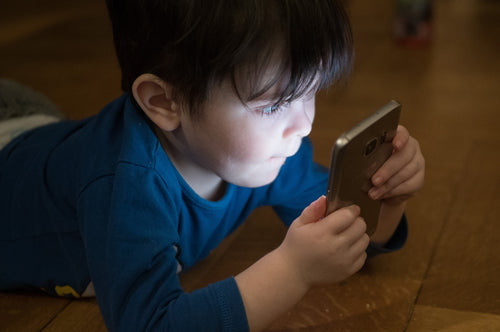In today’s ever-changing digital ecosystem, children are growing up surrounded by screens. The digital world is integral to their daily lives, from tablets to smartphones, laptops, and televisions. While technology offers numerous educational, communication, and recreational benefits, excessive screen time can harm a child’s overall development.
Striking a balance and setting appropriate screen time guidelines is crucial to ensure a child’s healthy growth and development. In today’s Piper Finn blog post, we’ll explore kid screen time and effective strategies for balancing child media exposure.
What is the Impact of Excessive Screen Time on Kids?
Excessive screen time can lead to a myriad of issues for children. Studies show that excessive kid screen time can harm different developmental domains, including linguistic, cognitive, and socioeconomic growth. Physical health concerns such as obesity, poor posture, and disrupted sleep patterns are also common consequences.
Furthermore, prolonged exposure to screens can hinder a child’s social and emotional development, impede academic performance, and even contribute to behavioral problems.
What is Healthy Screen Time for Kids?
Healthy screen time involves limiting the duration and type of content children consume on screens. It’s about finding the right balance between utilizing technology for educational purposes and engaging in physical, outdoor, and creative activities. Professional organizations like the American Academy of Pediatrics (AAP) and HealthyChildren.org recommend the following guidelines to help parents regulate their child’s screen time effectively:
Age-Appropriate Guidelines
- Under 18 months
Screen time is discouraged, except for video chatting with family and friends. Young children learn and grow by exploring the physical world around them and will have a hard time understanding what they see on screen media.
- 18-24 months
Introduce high-quality educational apps or programming under parental supervision. Avoid solo media use and try to re-teach the lessons from educational media.
- 2-5 years
Screen time for kids aged 2 to 5 should be limited to 1 hour per day. Look for high-quality educational programming and co-view the media with your child to help them understand the content. Ensure you choose non-violent, interactive, pro-social, and educational media and incorporate other activities to help your child develop a healthy body and mind.
- Six years and older
Establish consistent screen time limits that align with the child’s needs and activities.
Encourage a balanced approach, incorporating physical activities, social interactions, and enriching experiences. Limiting screen time can ensure media use doesn’t displace other vital activities like family time, sleep time, and exercise.
Strategies to Limit Screen Time and Maintain Balance
Strategies that can come in handy in balancing child media exposure include the following:
1. Leading by Example
Children often imitate the behavior of adults. Showcase a balanced approach to screen time by setting personal limits and demonstrating engaging alternatives. Set a good example by putting aside your phone or turning off the TV during media-free times.
2. Creating Screen-Free Zones
Designate specific areas in the house, such as the dining room or bedrooms, where screens are not allowed to encourage family interactions and other creative activities.
3. Establishing Clear Rules
Set clear and consistent screen time rules, including when and how to use screens. Ensure that children understand and adhere to these guidelines.
4. Encouraging Outdoor Activities
Promote physical exercise, outdoor play, and sports to divert attention from screens and encourage a healthy, active lifestyle.
5. Engaging in Creative Play
Encourage imaginative play, reading, drawing, and other creative endeavors that stimulate a child’s imagination and cognitive development.
6. Scheduling Family Time
Set aside regular family time without screens, engaging in activities like board games, storytelling, or simply sharing experiences.
7. Monitoring Content
Ensure you know the type of content your child is consuming and determine what type of media it is and whether it encourages appropriate behaviors. Ensure it is age-appropriate, educational, and aligns with your family’s values.
The Importance of Communication and Flexibility
While guidelines provide a framework, it’s essential to maintain an open line of communication with your child regarding screen time. Understand their interests and needs, and be flexible when necessary. Adapt the rules based on their age, maturity, and evolving technology landscape, and don’t feel pressured to introduce technology early.
Final Thoughts
Screen time is inevitable in modern childhood, but it’s crucial to manage it mindfully. By setting appropriate limits and encouraging a balanced approach, parents can ensure their children grow up with healthy habits, both online and offline. Ensure you strive for a nurturing environment that fosters a love for learning and creativity, all while keeping the screen in its rightful place – as a tool for growth and development.

















